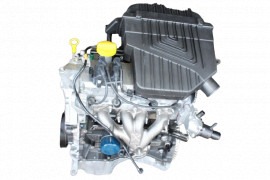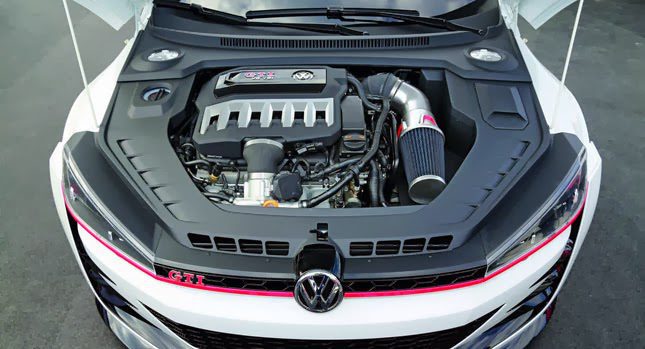Enhance Your Ride with a High-Quality Opel Corsa Engine
Enhance Your Ride with a High-Quality Opel Corsa Engine
Blog Article
Exploring the Inner Workings of a Compact Lorry's Engine System
As motorists, we frequently take for approved the detailed procedures that occur within the confines of our lorry's engine system. In this exploration of a small automobile's engine system, we will unravel the internal operations of this mechanical symphony, dropping light on the enigmas that drive us forward on our day-to-day trips.
Combustion Process Review
The combustion process in a portable vehicle's engine system is an important device that effectively transforms gas into energy to power the automobile. This procedure occurs within the combustion chamber of the engine, where fuel and air mix, spark, and generate controlled explosions. The combustion process includes four primary stages: consumption, exhaust, power, and compression.
During the intake phase, the piston relocates downward, drawing in a mixture of air and fuel right into the combustion chamber. The following stage, compression, entails the piston moving upwards, compressing the air-fuel combination to boost its strength. Ultimately, in the power stage, the ignition system fires up the pressed mix, causing a fast development of gases that requires the piston pull back. This downward movement creates the power needed to drive the car. Ultimately, in the exhaust stage, the burnt gases are expelled from the combustion chamber via the exhaust valve, preparing the chamber for the next cycle. This cyclic combustion procedure is essential to the procedure of a portable car's engine system, guaranteeing effective energy conversion for propulsion.
Piston and Cylinder Communication

The piston's exact fit within the cyndrical tube is important for preserving ideal compression and stopping power loss throughout burning. Limited clearances in between the piston and cylinder walls ensure reliable securing, permitting the piston to move efficiently without permitting gases to leakage past. Appropriate lubrication is likewise important to decrease rubbing and use in between these elements, improving durability and efficiency.
Furthermore, the layout and products utilized in manufacturing the piston and cylinder influence engine performance and longevity. Modern engines often use light-weight yet sturdy products like aluminum alloys for pistons and cylinder linings to minimize inertia and enhance thermal efficiency. On the whole, the unified communication in between the piston and cylinder is fundamental to the engine's capability and general performance.
Fuel Shot System Capability
Gas shot systems in compact lorry engines play an essential function in precisely supplying fuel to the combustion chamber for controlled and effective ignition. The fuel shot system functions by infusing fuel into the combustion chamber at the optimum moment during weblink the engine's operation (opel corsa engine). This precise timing makes sure that the fuel blends equally with the air for proper burning, leading to enhanced gas effectiveness and lowered discharges
There are largely 2 kinds of gas injection systems made use of in compact automobile engines: port gas shot (PFI) and direct fuel shot (DFI) PFI systems inject fuel right into the intake port before the consumption valve, while DFI systems inject gas straight into the combustion chamber. Both systems have their benefits, with DFI offering much better gas atomization and PFI providing a more economical solution.
Understanding Engine Air Conditioning Devices
Efficient procedure of a portable vehicle's engine relies greatly on the performance of its cooling mechanisms. Engine air conditioning is vital to avoid getting too hot, which can bring about serious damage and decreased performance. The cooling system in a small automobile typically includes a number of elements functioning with each other to manage the engine temperature level. One essential component is the radiator, which makes use of coolant to soak up warmth from the engine. As the warm coolant moves through the radiator, it launches warmth right into the air, cooling prior to going back to the engine. The water pump distributes the coolant with the engine and go to this website radiator, ensuring a regular circulation to manage temperature level. In addition, the thermostat aids regulate the coolant circulation to keep optimum engine temperature level. Some vehicles likewise have cooling down fans that activate when extra air conditioning is required, such as throughout hefty web traffic or heat. Recognizing these engine cooling systems is important for maintaining the efficiency and long life of a portable automobile's engine system.

Exhaust System Parts Explained
The ideal functioning of a compact lorry's engine air conditioning mechanisms relies on a corresponding system called the exhaust system, which consists of different necessary elements for guaranteeing efficient exhausts and engine performance. The exhaust system consists of elements such as the exhaust manifold, catalytic converter, muffler, and tailpipe. The exhaust manifold accumulates exhaust gases from the engine's cylinders and courses them to the catalytic converter. The catalytic converter then transforms hazardous toxins in the exhaust into much less damaging exhausts before launching them with the muffler and tailpipe.
One essential part of the exhaust system is the oxygen sensor, which keeps an eye on the oxygen degrees in the exhaust gases to help control gas intake and ensure ideal engine performance. opel corsa engine. In addition, the resonator might be present in some exhaust systems to minimize sound degrees. In general, the exhaust system plays a crucial duty in maintaining engine effectiveness, lowering hazardous discharges, and guaranteeing a quieter driving experience for compact lorry proprietors

Verdict
In final thought, the compact automobile's engine system is a complex mix of elements that interact to assist in the burning procedure, transform gas into energy, and remove waste gases. Recognizing the internal functions of the engine system, consisting of the piston and cyndrical tube communication, gas shot system, engine air conditioning mechanisms, and exhaust system components, is important for maintaining ideal performance and performance of the lorry.
The burning procedure home in a portable lorry's engine system is a vital system that effectively converts fuel into power to power the automobile.Fuel injection systems in small car engines play a vital function in exactly providing gas to the burning chamber for reliable and regulated ignition.There are mainly two types of gas shot systems utilized in portable lorry engines: port gas shot (PFI) and direct fuel shot (DFI) Recognizing these engine air conditioning systems is important for maintaining the performance and longevity of a portable automobile's engine system.
The ideal functioning of a portable lorry's engine cooling mechanisms depends on a corresponding system recognized as the exhaust system, which consists of different vital components for guaranteeing effective discharges and engine performance.
Report this page